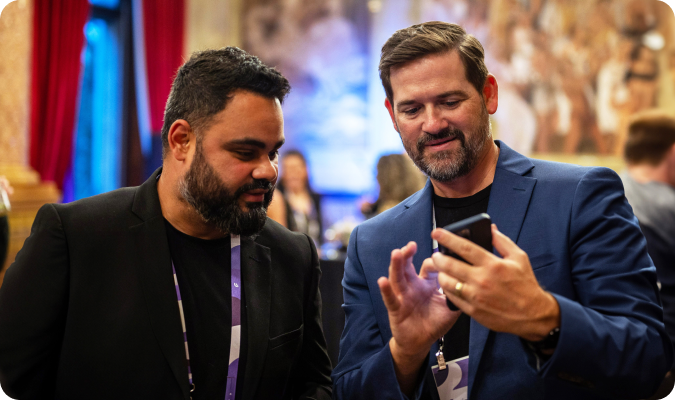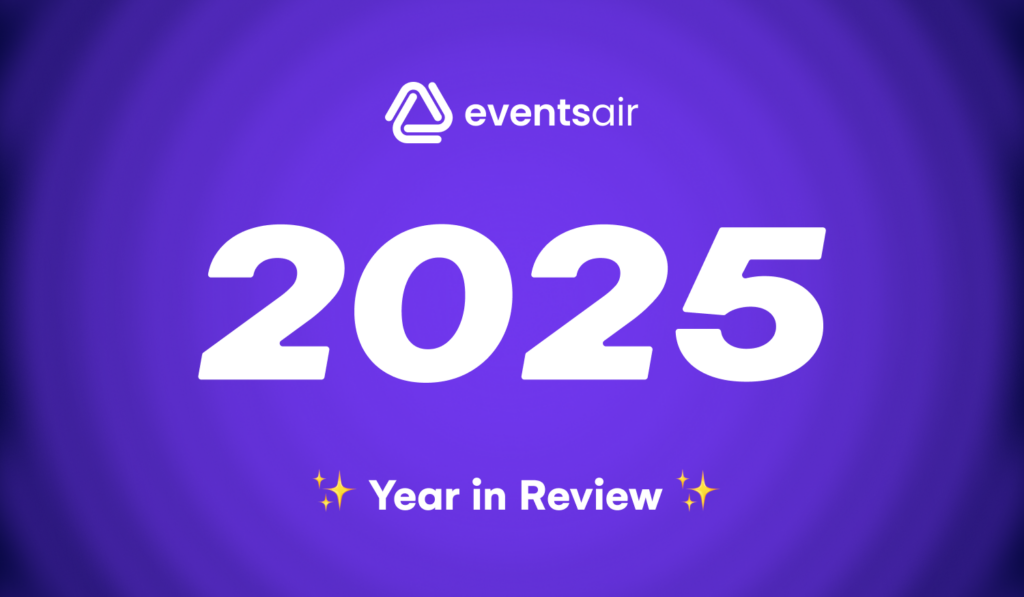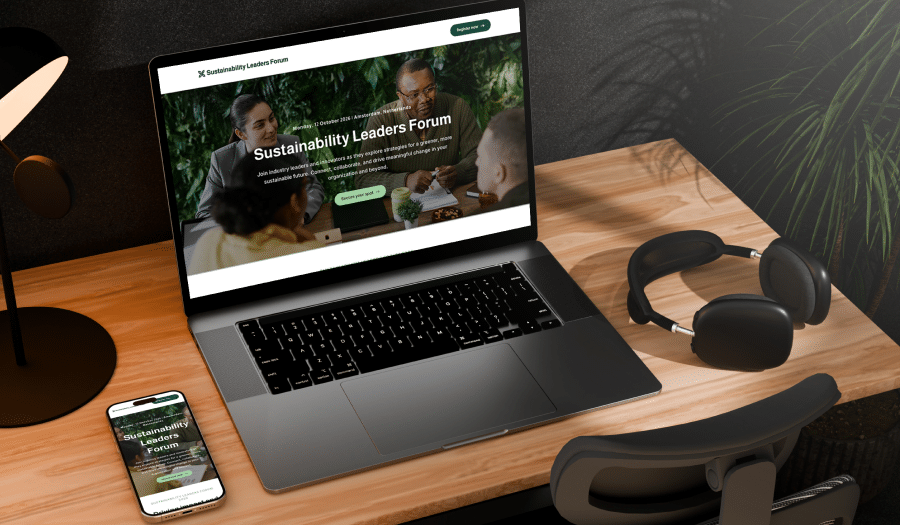
As we discussed in part one of this blog (20 essential event survey questions you need to ask) – the most successful event starts with quality data collection. Event surveys, with the right questions included, are one of the essential building blocks of data collection.
But having great event survey questions is only one piece of the puzzle. The next crucial steps are (1) driving responses and then (2) analyzing the results.
We’ll take a look at both of these below.
The secret to high response rates for event surveys
You may have created a great survey but without answers to your questions, your data won’t be significant. You only get a few opportunities each year to gather this data, so make each survey count.
Here are a few ways to get top-notch response rates:
- Short and sweet: If an event survey has too many questions, people may not complete it. (e.g. the majority of mobile users abandon surveys that contain more than 10 questions).
- Provide time estimate: When you send out your survey, indicate an estimate of how much time it will take, and your audience will be more inclined to answer the entire survey.
- User-friendly: Design your customer satisfaction surveys in a user-friendly way to increase your response rates. We found this article which has some great tips.
- Incentives: Make it worth a participant’s time to take your survey. Offering a financial discount on future conference or event tickets will boost response rates. Get creative.
- Great design: A clean looking survey design with short questions (not more than 15 words in length) will help you boost response rates.
- Segmentation: Consider tailoring the questions for different groups or segments. You will get a better perspective of the entire event, but be able to view it through the lens of different attendee experiences.
Tap into support requests/tickets for more data
You may have attendees across the globe and many of them will have certain questions about the event. So while you’re not strictly gathering survey feedback, it’s still a critical data and insight collection point for your event. If your attendees are telling you something, count that as feedback, regardless of the source.
It’s always a good idea to create a FAQ section on your event portal. Include all the details and specifics for your event (Tip: use previous survey responses for FAQ ideas). Ideally, your global attendees will be able to troubleshoot their own issues and solve any event-related questions on their own, anytime and from anywhere.
Not all questions will be solvable from your FAQ portal. This is why it’s a good idea to work with an event tech partner with the capability to raise and track support tickets, even on the weekends.
Let’s start analyzing your collected data
Making sense of your event data can be a complex process. You’ll often find yourself looking at trends and insights that seem to contradict each other, not to mention surveys that haven’t been completed and thus, skew your results. This is why it’s always best to keep your event surveys short and sweet – dealing with incomplete data due to people dropping out can be a statistical nightmare!
However, the good news is you don’t have to have a degree in statistics to gather meaningful insights from your event survey questions. By taking a holistic view of the data to discover high-level trends, you can piece together an accurate picture of your attendee feedback. In other words – don’t get bogged down in individual responses, as there will always be outliers from the general trends.
Some other strategies to keep in mind when analyzing your event survey questions include:
- Segment your responses: Filter your event survey answers by various demographic categories, and you’ll be able to identify trends within attendee groups. This can be helpful if you’re looking for specific feedback from attendees from a particular industry or with a certain job title. (You might also explore responses from attendees who reported a negative experience at the event, and see if there were any commonalities across the rest of their feedback).
- Only count quality responses: Many survey platforms (such as SurveyMonkey) offer you the ability to remove responses that were completed very quickly. Depending on the length of your survey, this could be anything from 30 seconds to two minutes. If people haven’t taken time to consider their answers and are just rushing through to claim an incentive, their feedback may not be accurate and could skew your results.
- Use visual tools: If you’ve collected open-ended (written) responses, try presenting some of this information in a visual format. By experimenting with tools such as word clouds (or try something like Dovetail if you have the budget) you’ll be able to pull out common themes from open-ended questions. Then you’ll have some great visual aids to use when you’re presenting back to your clients and other stakeholders.
That’s a wrap
The success of an event depends not only on the work you put in during the event, it also depends on your efforts before and after the event. Getting in touch with your event’s audience and getting their insights through well-crafted survey questions is a critical step that will help determine the success of your event.
It doesn’t matter how well you thought your event went, what matters is your attendee’s experience. Embrace feedback (good and bad) and develop a passion for making each event a little better – by listening to feedback and implementing improvements.
How can our event software help to improve your next event?
At EventsAir, we understand the importance of selecting the right event technology partner – someone who can help turn your valuable data into information gold and improve the overall experience for your attendees.
We have one simple mission: to help event planners deliver the WOW in their events with the world’s most powerful event management technology. We’ve delivered some of the world’s biggest events, and we’d love to help you too.
You can also use EventsAir to run post-event surveys and gather attendee feedback, so if you are inspired to improve your attendee insights reach out to request a demo.
Attendee Engagement | Attendee Experience | Event Data & Analytics | Event Technology & Apps
See EventsAir in action
Discover why 12,000+ event professionals trust EventsAir to deliver effortless events, every time.




